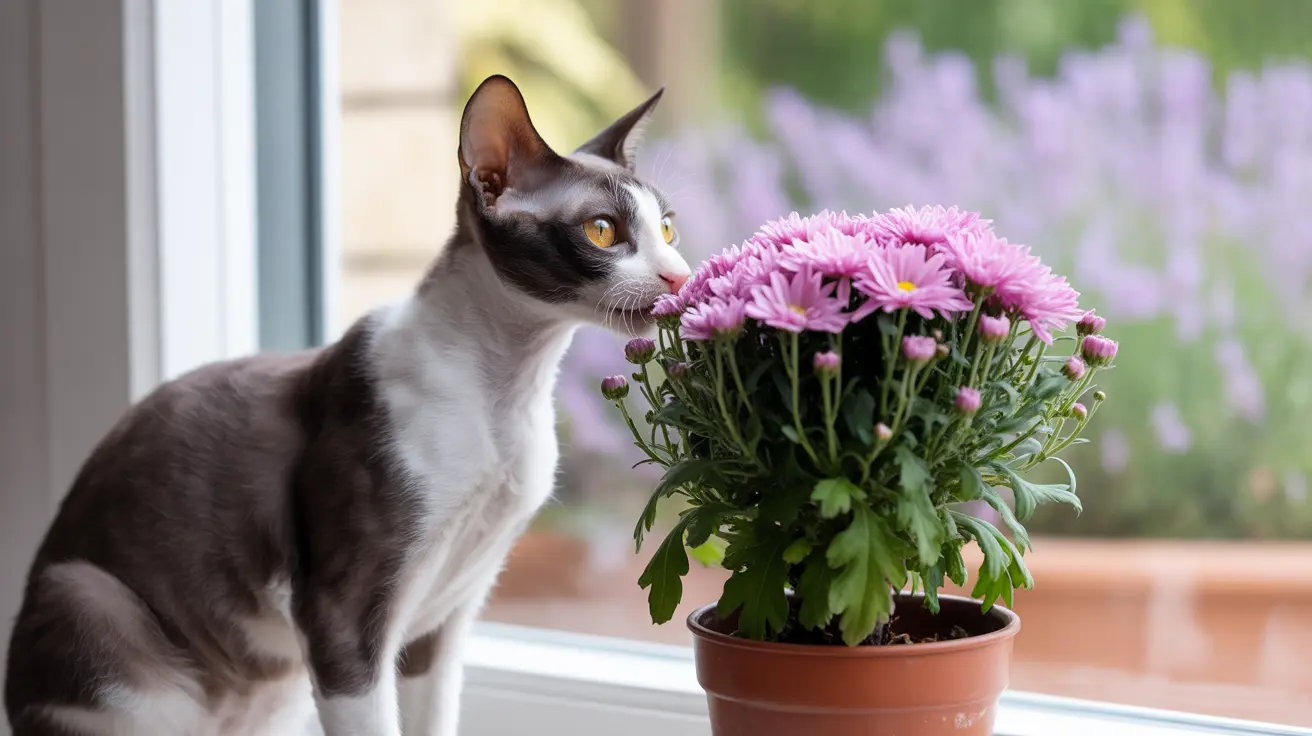If you're a cat owner who loves decorating with seasonal flowers, you need to know about the dangers of chrysanthemums. Mums are toxic to cats, and while they're a popular choice for fall décor and garden plantings, these beautiful blooms can pose serious health risks to our feline friends.
In this comprehensive guide, we'll explore why mums are dangerous for cats, what happens if your cat encounters these plants, and how to keep your pet safe while still enjoying seasonal decorations.
Understanding Mum Toxicity in Cats
Chrysanthemums contain several compounds that make them toxic to cats, including pyrethrins, sesquiterpene lactones, and essential oils. Every part of the plant - from flowers to leaves, stems, and even pollen - can cause adverse reactions in cats.
What makes mums particularly concerning is that cats are especially sensitive to pyrethrins, which are natural insecticides found in these plants. Even small exposures can lead to significant symptoms in some cats.
Common Symptoms of Mum Poisoning in Cats
Digestive Issues
The most immediate signs of mum toxicity often affect the digestive system:
- Vomiting
- Diarrhea
- Excessive drooling
- Loss of appetite
Neurological Symptoms
More serious reactions can include:
- Unsteady walking or loss of coordination
- Tremors
- Depression or lethargy
- In severe cases, seizures
Emergency Response for Mum Exposure
If you suspect your cat has ingested any part of a mum plant, take these immediate steps:
- Remove any plant material from your cat's mouth if possible
- Contact your veterinarian or pet poison control immediately
- Monitor your cat closely for developing symptoms
- Do not induce vomiting unless specifically instructed by a professional
Prevention and Safe Alternatives
The best way to protect your cat from mum toxicity is through prevention:
- Keep mums out of your home and garden if you have cats
- Choose pet-safe alternatives like African violets or spider plants
- Create physical barriers around outdoor plants
- Consider artificial flowers for seasonal decorating
Frequently Asked Questions
Are mums (chrysanthemums) toxic to cats, and which parts of the plant are dangerous?
Yes, all parts of mums are toxic to cats, including flowers, leaves, stems, and pollen. The plants contain harmful compounds like pyrethrins and sesquiterpene lactones that can cause various adverse reactions in cats.
What symptoms should I watch for if my cat has ingested mums?
Watch for vomiting, diarrhea, excessive drooling, loss of appetite, unsteady walking, tremors, and lethargy. Severe cases may lead to seizures or more serious complications.
How soon do signs of chrysanthemum poisoning appear in cats after exposure?
Symptoms typically appear within two hours of ingestion, though timing can vary based on the amount consumed and the individual cat's sensitivity.
What immediate steps should I take if my cat eats or contacts a mum plant?
Contact your veterinarian or animal poison control immediately, remove any remaining plant material from your cat's reach, and monitor your pet closely for developing symptoms.
Can mums cause skin irritation in cats without ingestion, and how can I prevent exposure?
Yes, direct contact with mums can cause skin irritation and dermatitis in cats. Prevent exposure by keeping mums out of your home and garden, or by creating physical barriers between cats and plants.
Conclusion
While mums are beautiful seasonal flowers, their toxicity to cats makes them a risky choice for homes with feline family members. By understanding these risks and choosing pet-safe alternatives, you can keep your cat safe while still enjoying seasonal decorations. If exposure does occur, quick action and professional veterinary care are essential for the best possible outcome.






